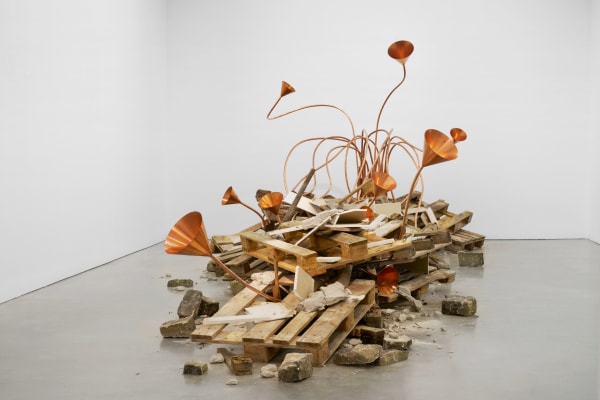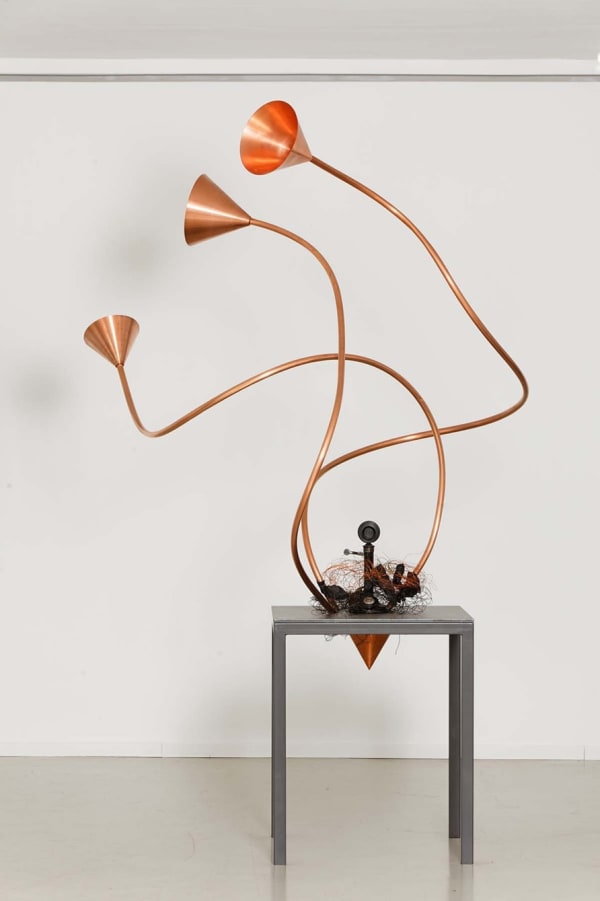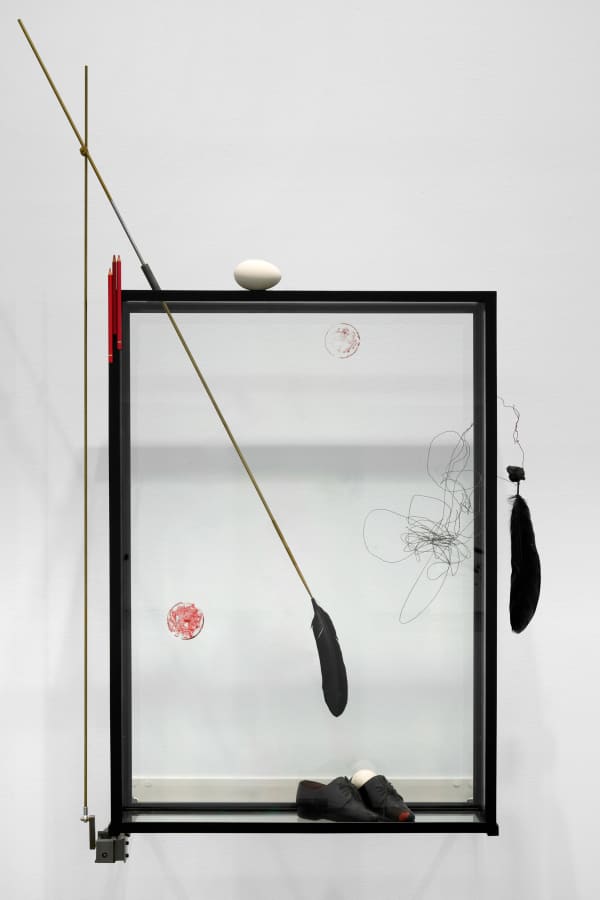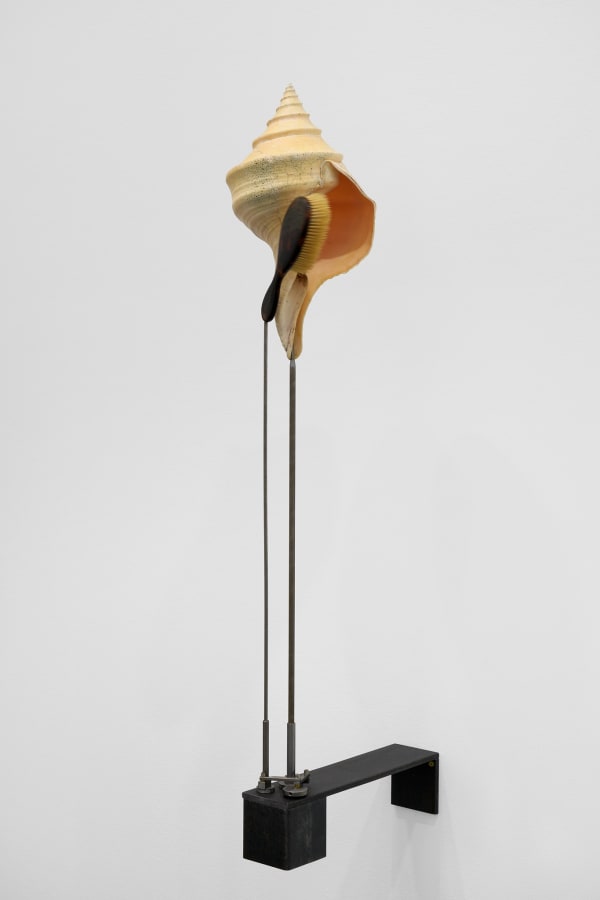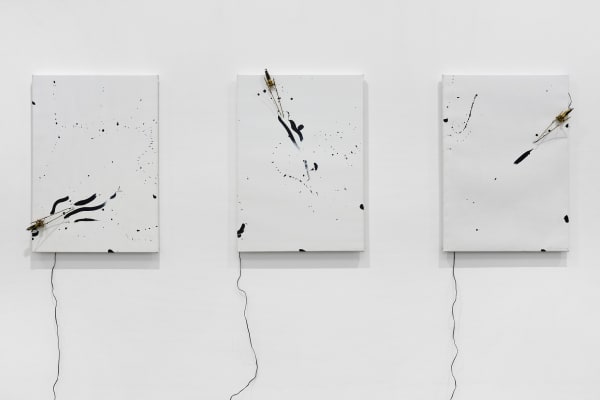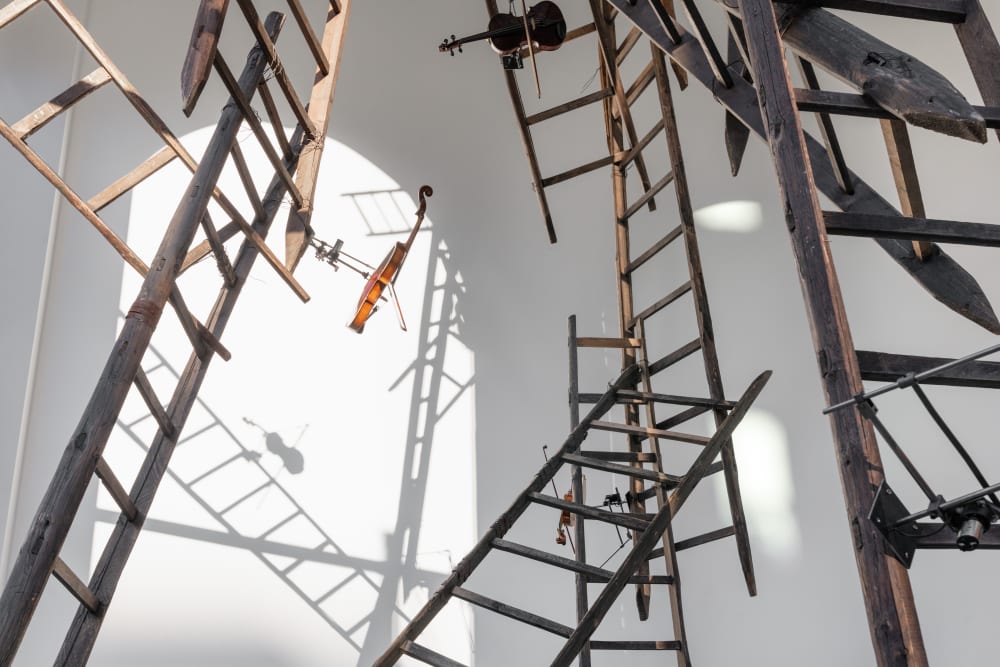CONCERT OF SIGHS: Rebecca Horn
-
Introduction
Rebecca Horn’s Concert of Sighs fills the space of Galerie Thomas Schulte, with the echoes muted whispers, which emanate from coiled copper trumpets jutting out of rubble. Piled on the floor are building pallets, wall fragments, and wooden boards, lay strewn in piles on the floor from which thin copper tubes wind like plant shoots, ending in funnel-like trumpet mouths. The artist used building materials from the ruins of Venetian houses for her installation, which was originally created for the 1997 Venice Biennale. Whispers and sighs seep through the individual funnel trumpets, as if offering a mouthpiece to the life beneath the ruins, or as if the crumbling walls of Venice were telling us their story. These delicate, yet haunting sounds, make the skin crawl, as the voices, audible in several languages, lament their suffering. As viewers, we do not merely hear the “concert of sighs”, we feel it as a physical and visceral experience. This work serves as a further testament to Horn’s mastery of sensory orchestrating: enveloping all our senses from balance to touch as the echoing sighs seep through our skin.
As we stand closer to the work, we feel its innate fragility; fearing that at any moment, a piece could fall, slip, and crush the copper pipes from which the sounds flow. Through our sense of balance, our bodies resonate with Rebecca Horn’s installation. On the one hand, we embark on a journey to Venice; on the other, we are confronted with a more wholistic sense of chaos and destruction.
Thus, it is its inherent multisensory power that makes the Concert of Sighs so significant. The work challenges our sense of balance, the solidness of the ground beneath our feet, and indeed, our sense of existential security. For Rebecca Horn, the body becomes a sensory commune in which the sense of touch—not sight—is the starting point and basis of a multisensory experience. The artist understands that touch encompasses the entire body and thus interacts with our other senses. We do not literally have to touch her works to see them embodied. It is a physically and emotionally activated perception that involves not only the touch of the hand, but the entire repertoire of the body’s materiality and its somatosensory experiences. It also draws on our depth sensitivity, pushing us to consider the position and dynamics of our bodies in space.
As recent research in neuroaesthetics shows, hearing is also a specialized form of tactile perception that is limited to a specific area of the body. In this way, we learn and take in information through each sensory experience, which goes beyond our cognitive or psychological forms of knowledge production. When we listen to the sighs, when we see and feel the elements of the dilapidated Venetian houses, we gain an embodied wisdom and experience that the artist is sharing with us. One which transports us beyond the decays of Venice, but which confronts us with our own contemporary world, regardless of the city we live in. This stands in contrast to Marco Polo’s character in Italo Calvino’s novel The Invisible Cities, who—no matter what city he was talking about—always told the story of Venice. What Rebecca Horn and Marco Polo have in common, on the other hand, is aptly stated by the Great Khan in Calvino’s same novel: “Admit what you are smuggling: states of mind, states of grace, elegies!”
Alongside Concert of Sighs, stand two works, Raven’s Choice and Schlupfloch, which, in Horn’s similarly characteristic style, introduce a sensual lightness, a sense of humor and even erotic tone, which call up images of hair tickling our skin and pushing us to ask, where do sighs truly originate from?
Rebecca Horn composes a polyphony of senses—a visceral and physical experience opening at Galerie Thomas Schulte.Text by Prof. Dr. Marta Smolińska
Translation by Leonie SchulteShortly before the opening of the exhibition Concert of Sighs, Rebecca Horn passed away on 6 September, 2024 at the age of 80.
-
Installation Views
-
Works
-
Video
-
Inquire about works in "Concert of Sighs"

-
Artists on view


